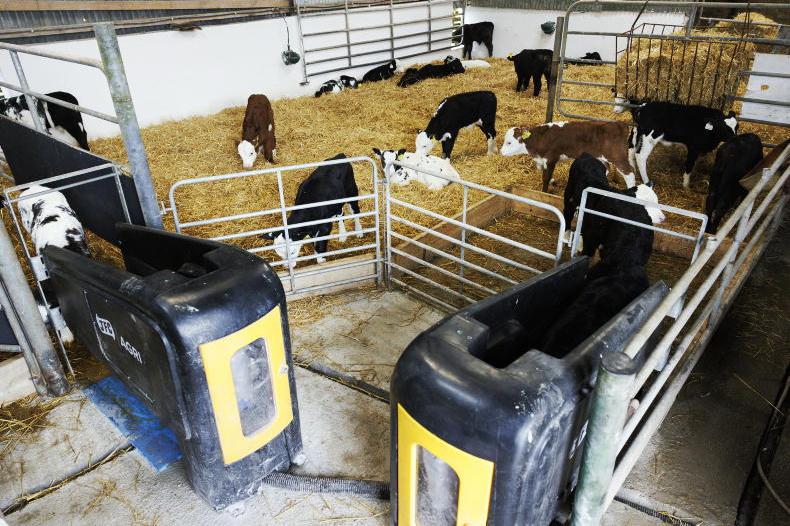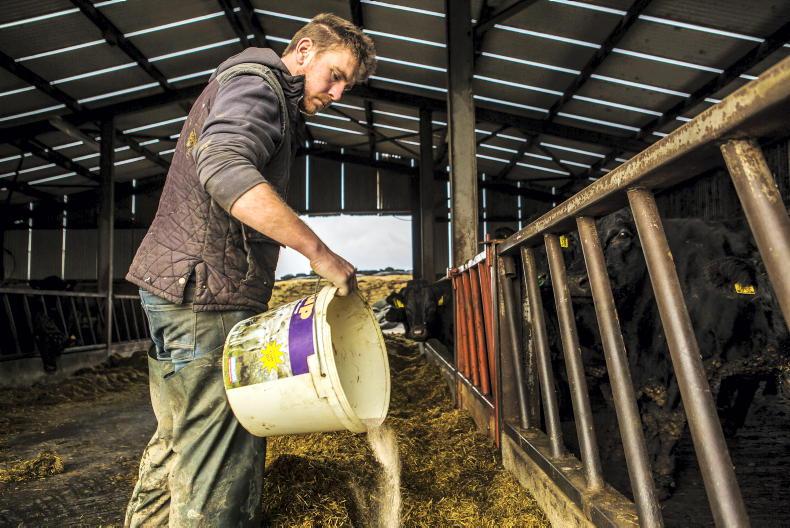Having the correct environment for calves is really the third leg of the three-legged stool in keeping calves healthy, alongside correct nutrition and vaccination protocols.
While ventilation is the most commonly talked about factor in good calf housing, other areas of play come into force to ensure optimal conditions.
The majority of calves are housed in dry bedded sheds, with some specialised buildings operating off solid concrete/slatted feed areas.
While a variety of options exist for bedding, straw is the most common and arguably the best from a calf welfare point of view.
Adequate straw allows calves to ‘nest’, essentially burrowing themselves into the deep straw bed which acts as an insulator, with calves spending 80% to 90% of the day lying down.
Nesting helps to reduce the energy used to maintain body heat, with nesting calves comfortable in air temperatures as low as 8°C, despite preferring temperatures of 18-20°C.
The University of Wisconsin created a ‘nesting score’ to evaluate the adequacy of bedding.
At score one, calf legs are fully visible; at score two, calf legs are partially visible; at score three, calf legs are obscured by bedding. Score three is the desired target in very cold weather with bedding topped up when required, particularly at night when air temperature tends to drop.
Calves will require 15kg to 20kg of straw/head/week (one small square bale) or one 4x4 round bale to bring a calf through from birth to weaning.
Frequent removal of soiled and wet bedding will help reduce straw usage.
Adequate effluent channels (75mm x 75mm) with floors sloped towards these (1:20 slope) will also help to keep straw clean and dry.
Space allowance and penning
A minimum of 1.5m² pen space per calf under 150kg is the legal requirement set out by the Department of Agriculture, with a preferred space allowance of 2m²/cal.
The majority of this should comprise lying space.
With a standard bay measuring 4.8 m (15ft 9in) long and giving a pen depth of the same, a pen of this size can comfortably hold 11 to 12 calves.
Bucket-fed calves of this size will require 350mm of feed space, again with the standard bay having adequate space for 13 calves.
Pen divisions should be 1.5m in height with a preference for vertical rather than horizontal bars for calves’ safety.
Disinfection and disease prevention
With the majority of herds in Ireland spring calving, a peak in calf numbers occurs which can put significant pressure on accommodation.
Firstly, it is always recommended to keep older and younger animals separate from each other to reduce disease pressure on the younger calves.
It is accepted that there will be a quick turn around on pens in a busy spring, but the longer pens are left idle between batches of calves, the greater the reduction in pathogens.
Walls, floors and barriers should all be thoroughly washed
All bedding should be completely removed at cleaning out as it acts as a vector for pathogens and bacteria.
Power washing is a good way to reduce the pathogen load in a calf pen.
Walls, floors and barriers should all be thoroughly washed, with care taken not to wet bedding in adjoining pens.
Where milk residue in present on barriers, warm water and soap (to break down fat) may be required to remove it completely.
A broad-spectrum disinfectant should be used, with hydrated lime being a common disinfectant on farms.
Many farmers choose to rear all or some of their calves on an outdoor basis.
Calves’ performance is comparable between calves reared outdoors to those reared indoors, provided they are given ample feed and have appropriate dry and warm shelter available, with less risk of pneumonia and other common diseases recorded.
Calves can be moved to outdoor accommodation at three to four weeks of age.
All effluent will have to be collected to comply with nitrates, with empty silage pits a common area used for outdoor calf rearing as effluent can easily be captured.
The direction of prevailing wind should be noted, with the entrance to calf hutches turned away from the south westerly direction.
Calf pens should be a minimum of 3m in depth to allow for them to be cleaned out with a tractor and loader/telehandler. Ideally, pens should be able to be cleaned out on an individual basis.
Use of a straw chopper will reduce time spent bedding, as well as improve the soakage properties of the straw, although care surrounding the dust created needs to be taken.
Misting units to reduce dust creation can be fitted to straw choppers.
On dairy farms, calf sheds should be kept close to the dairy to reduce the labour in carting waste milk. Milk carts can also be used to help with transportation, with metered pumps an accurate way to measure the volume of milk going in to calves.










SHARING OPTIONS